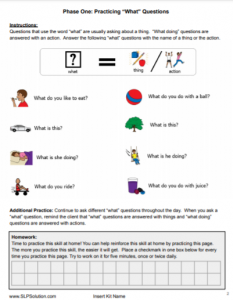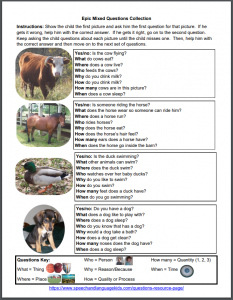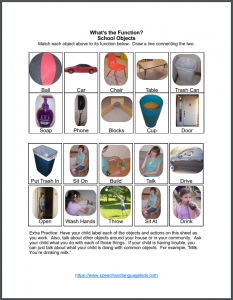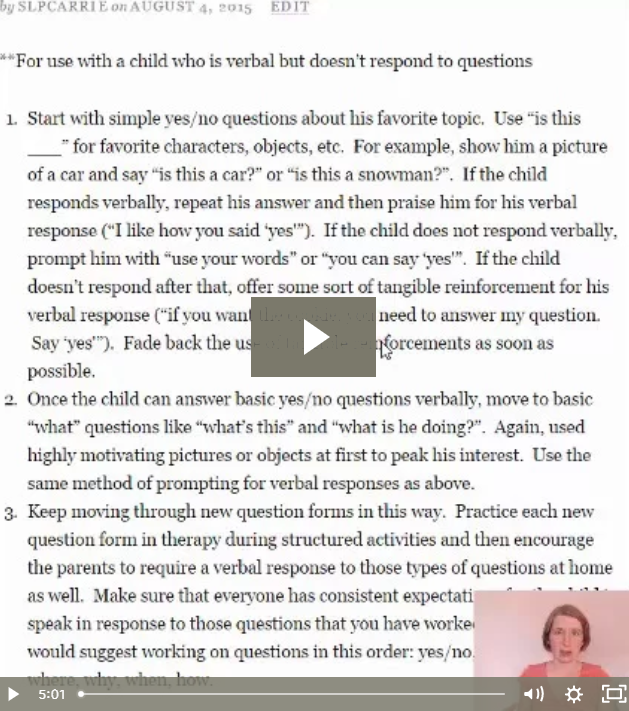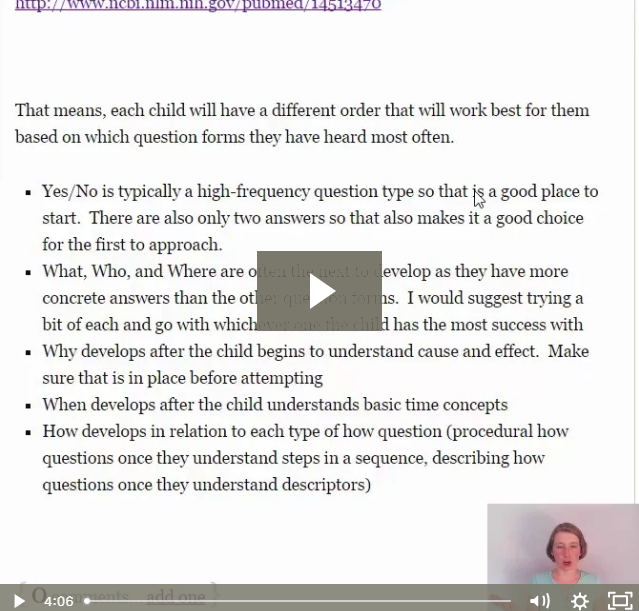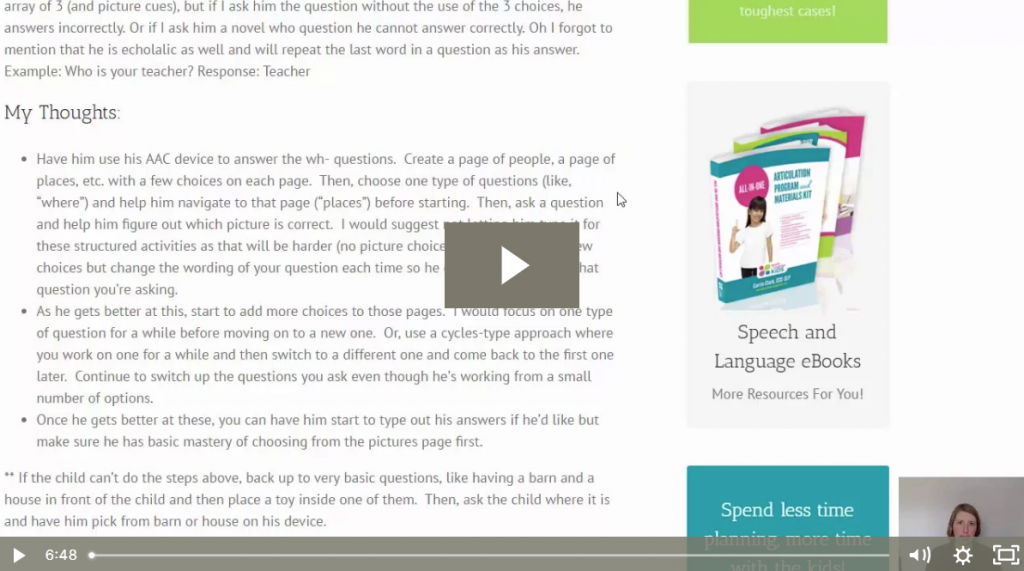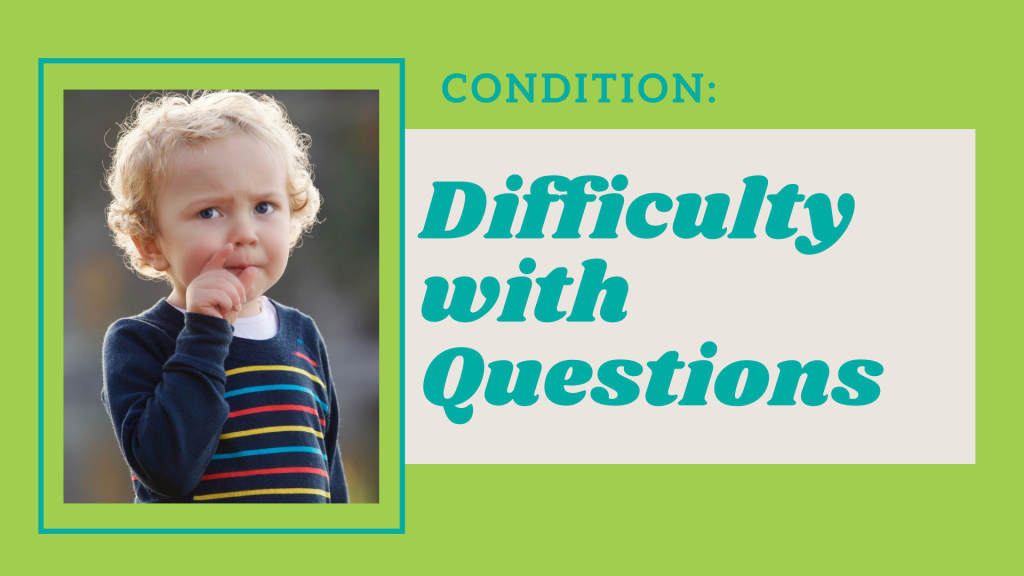Goal: Answer "What" Questions
Sample Goal:
During a 10-minute conversation sample, Client will appropriately answer “what” questions on at least 80% of observed opportunities (times when the client is asked a “what” question).
Download the No-Prep Therapy Kit:
We have a start-to-finish therapy kit that will give you everything you need to practice this skill in therapy and send home homework. Click the packet below to open it. Then, print it out and place it in the child’s notebook or binder.
Therapy Phases:
- Practice Specific “What” Questions: Client will answer specific “what” questions during structured activities with at least 80% accuracy.
- Practice “What” Questions in Structured Conversation: Client will answer a variety of “what” questions during structured therapy activities (such as describing pictures) with at least 80% accuracy.
- Answer “What” Questions in Unstructured Conversation: During a 10-minute conversation sample, Client will appropriately answer “what” questions on at least 80% of observed opportunities (times when the client is asked a “what” question).
What’s Next?
- Once the client has mastered “what” questions, move on to other question types.
Supplemental Materials
Here are some other resources that may help you when working on this skill:
Mixed Questions Pack
Several worksheets with pictures of common objects and questions for each one. Each picture has a “what” question along with a variety of other question types.
What’s the Function
Worksheet that will allow you to practice identifying the function of common school objects.
Training Videos:
Need some extra help on treating this skill? Check out these related training videos:
Activities:
First we must narrow this skill down just a bit. There are a ton of different types of questions that we can ask using the word “what”. Take a sample to see if the child can already answer any types of “what” questions and what types of questions he cannot. Here are some examples of different types of what questions. I’ve tried to arrange them with the easier types of questions at the top and the harder ones at the bottom, but they don’t need to necessarily be learned or taught in this order.
- Wants/Needs Questions (What do you want?)
- Labeling Questions (What’s this)
- Verb Questions (What are you doing? What is she doing?)
- Category Questions (What do you…)
- Function Questions (What do you do with this?)
- Time Questions (What time is it?)
- Hypothetical Questions (What would…)
Now that you’ve chosen just one type of “what” question to work on, plan an activity that will allow you to ask that question over and over again. For little ones, you may want to make this more play-based and ask “what is this” or “what do you want” during child-led play. For older children or more advanced question forms, you can come up with a list of questions and ask during direct intervention or table-top therapy.
You’ll want to speak specifically about what the question word means. You’ll want to say something about how “what” usually indicates a thing. So their answer should be a thing (or function, or whatever it is for the specific structure you’re using). This will be more important when you start working on more than one question word at a time!
Here’s a worksheet that you could use for helping a child identify the function of some basic school objects:
Once you’ve worked on this particular question form in therapy for a while, you can start to work it into more natural situations with the child. Ask that type of question during play or conversation. Stop by the child’s classroom and ask the question there. Get parents and teachers on board to start asking these questions and prompt correct responses.
Then, you can rinse and repeat. Go back and choose another question structure from this list or choose a new question type all together. Once the child is able to answer a few different types of question structures, you’ll want to start mixing them together. You may need to remind the child what the question word means (such as by saying “‘what’ means thing and ‘where’ means place).

